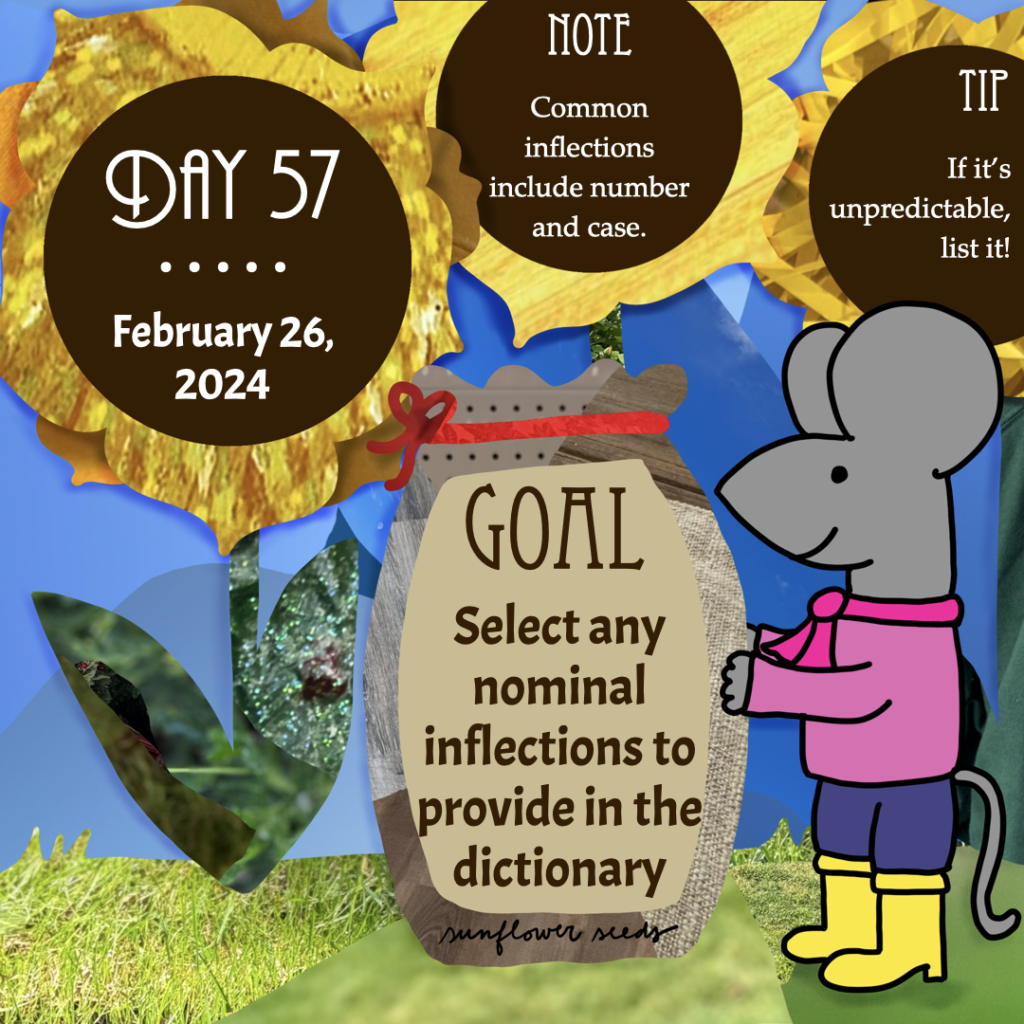
Goal: Select any nominal inflections to provide in the dictionary
Note: Common inflections provided include number and case.
Tip: If it’s unpredictable, list it!
Work focus: Organize/Plan/Structure
So far, your dictionary entries are likely headed by the base form of the noun. If you created any inflections that affect that base form when used in context, it’s good to consider whether you should also list those forms as part of the noun’s dictionary entry, such as including the plural form or providing the form when used in a particular case. You will have time tomorrow to update dictionary entries, too, so you may just want to spend today carefully reviewing your inflected forms to see what might be most helpful to list and then making those decisions.
Even if you don’t list inflections for every noun, I encourage you to list any irregular forms. Irregular forms may crop up due to sound changes, but you may also choose to create irregular forms for what would be your language’s most frequently used words. For instance, let’s say your speakers live in a densely forested area, and they use the word for “stick” quite often. Perhaps your word for “stick” is ika, and you have a plural prefix that appears as s- before nouns beginning with a vowel. The regular plural, then, would be sika. Let’s say, though, that the final syllable is stressed, so it’s pronounced [si.ˈka]. You could imagine that, over time, this commonly used word might shorten more than other plural forms and become produced as ska eventually, making it an irregular plural form.
